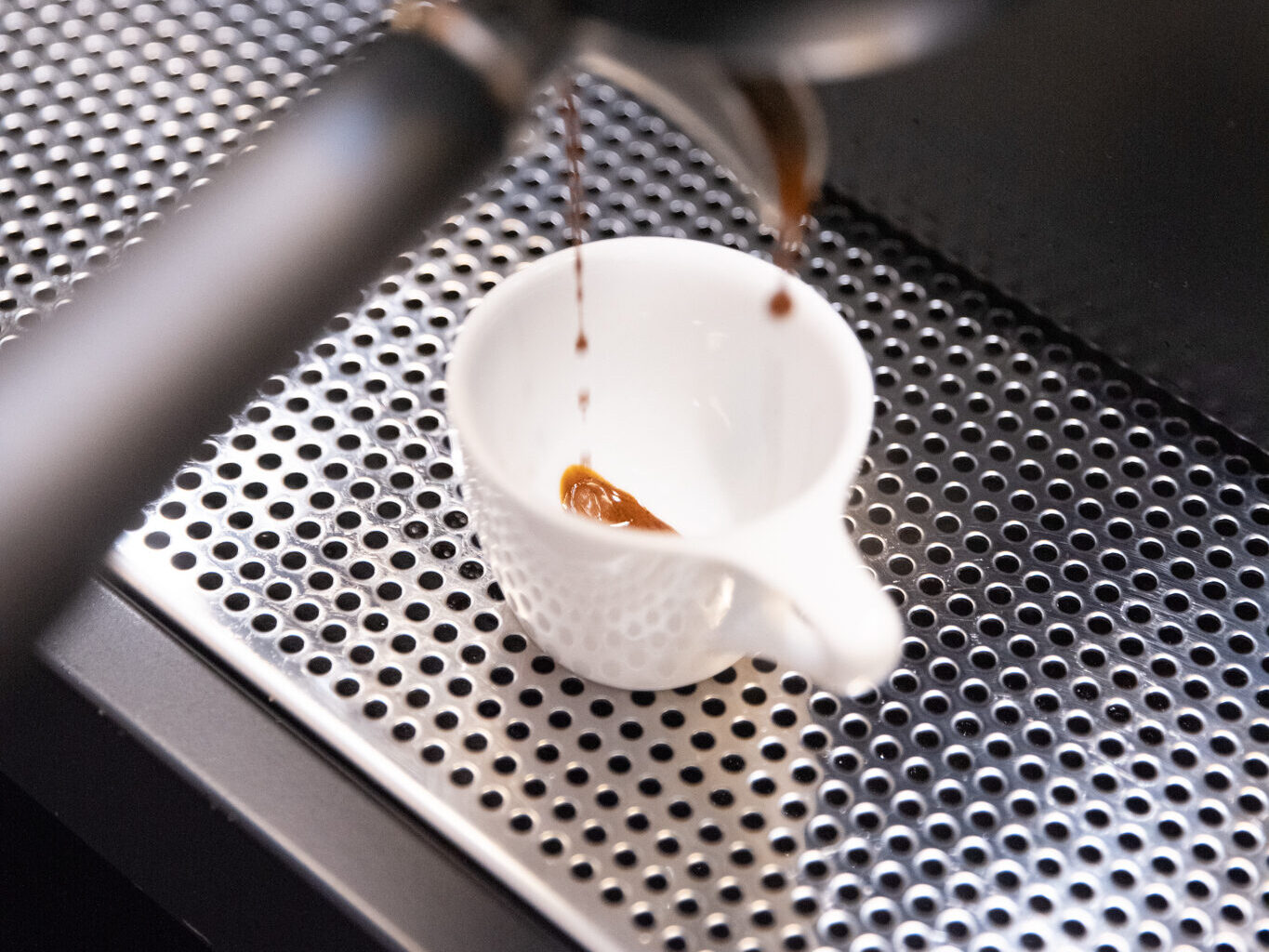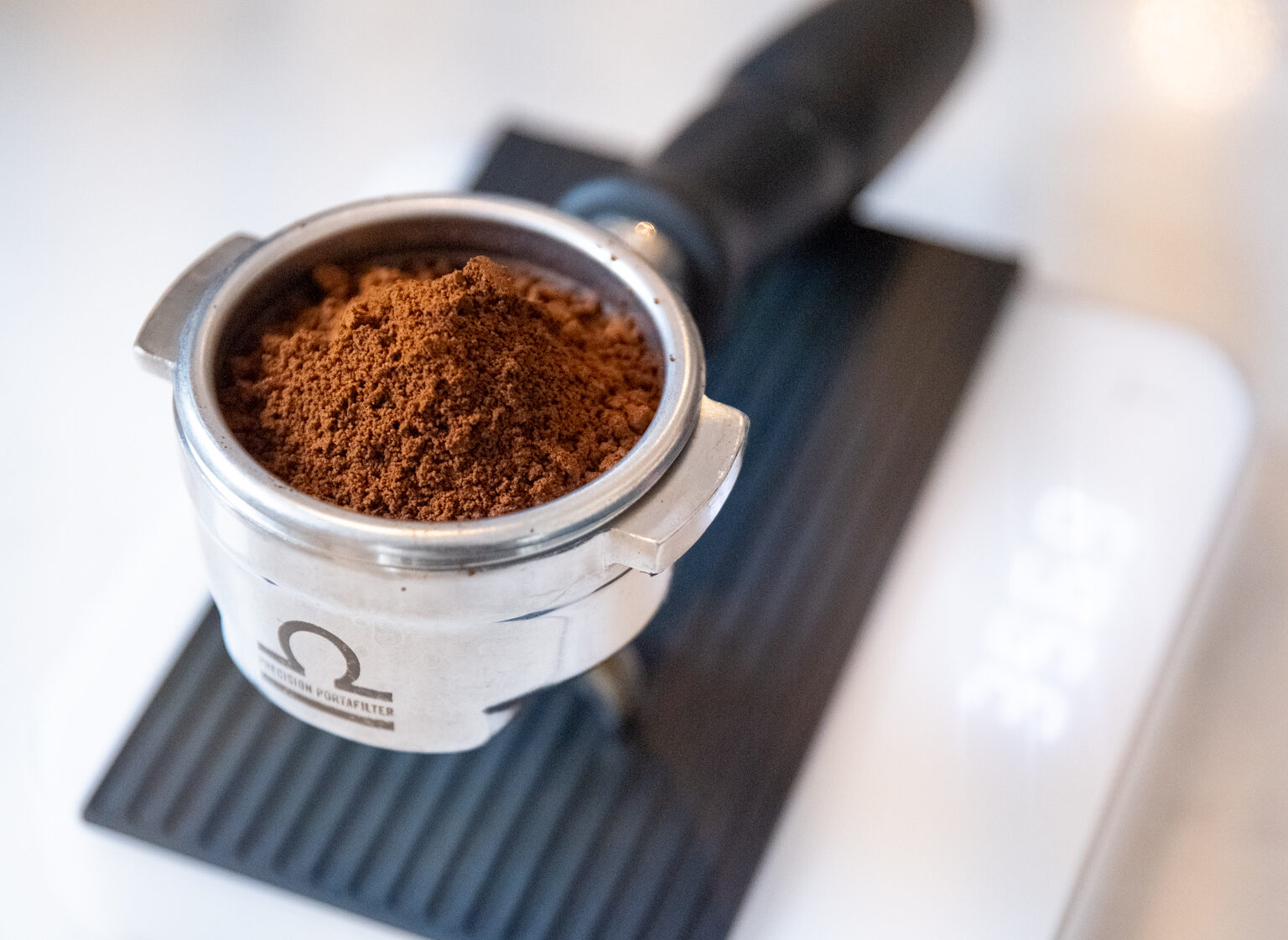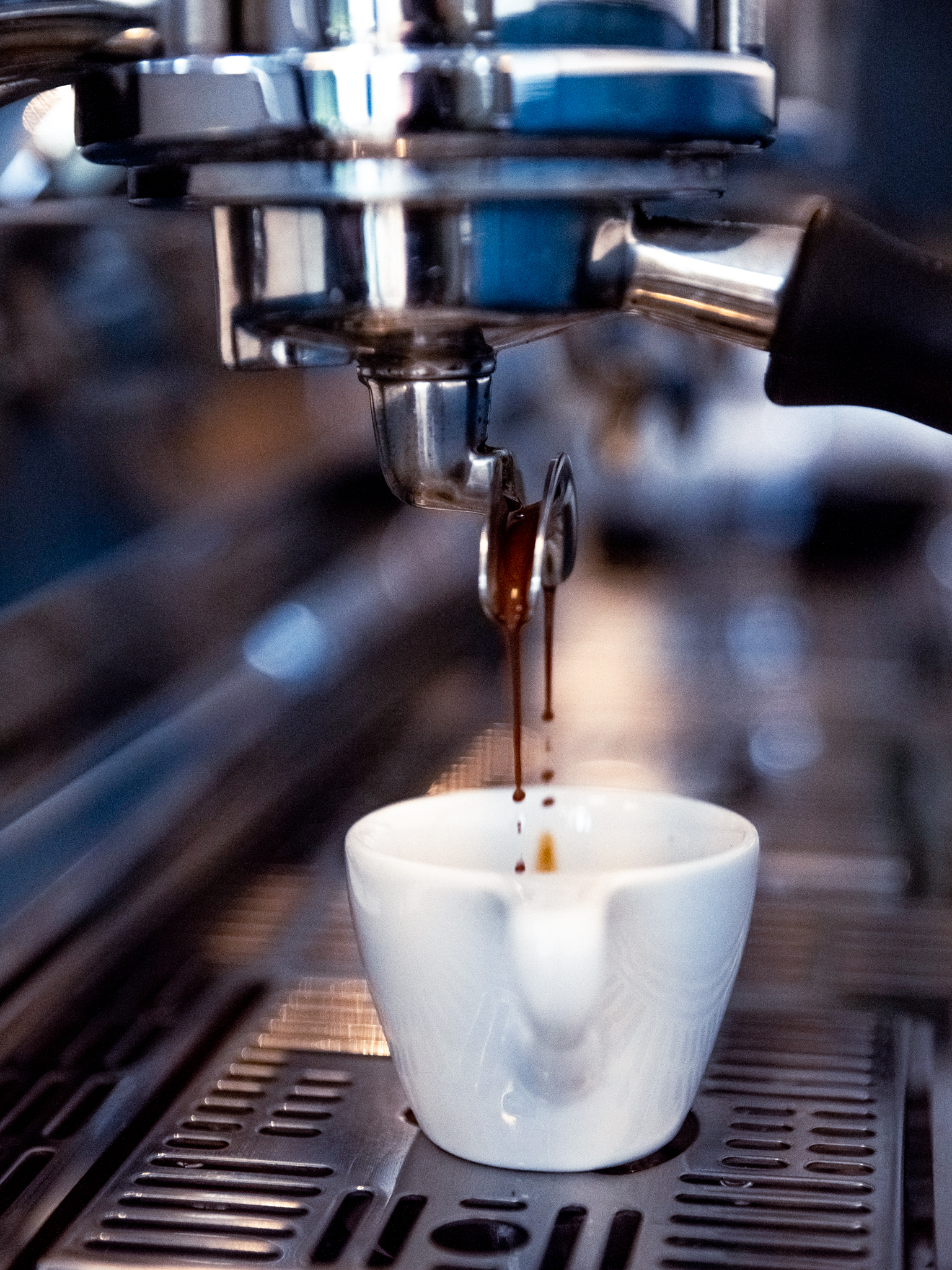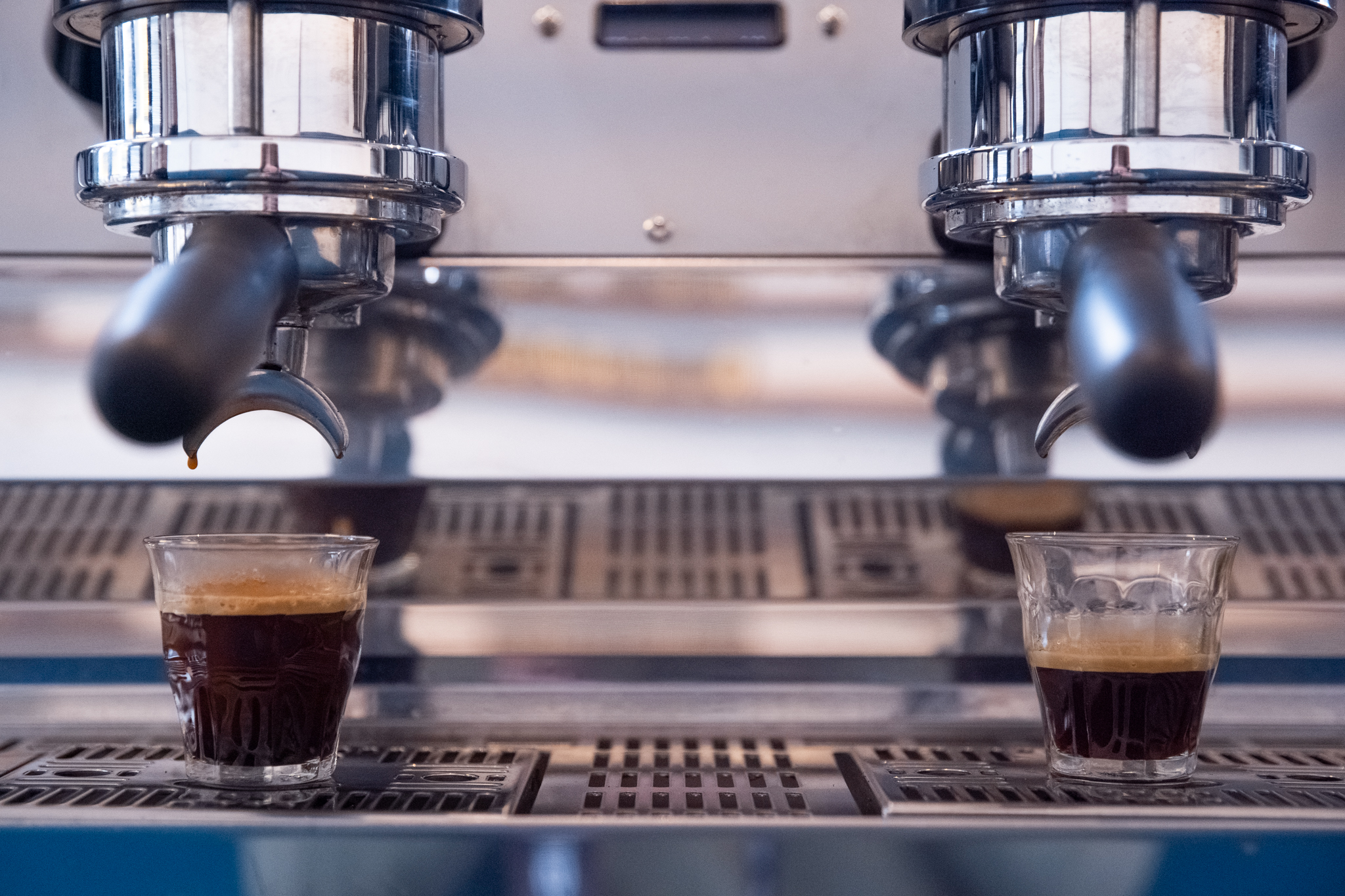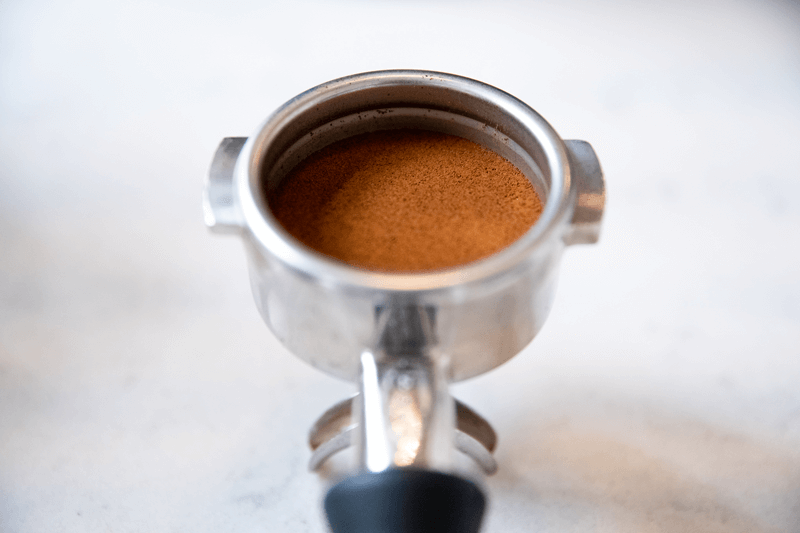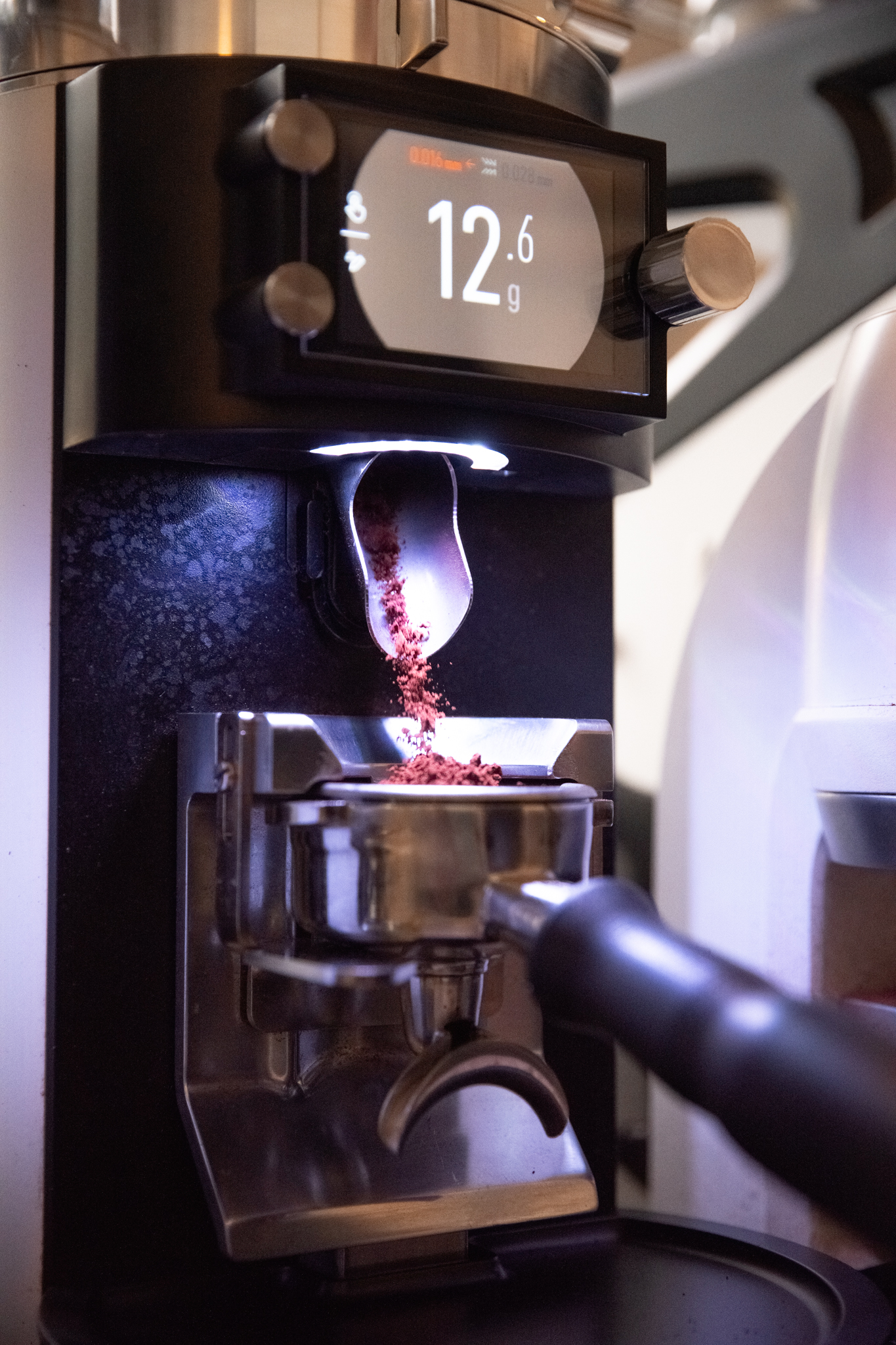ESPRESSO COFFEE
Understanding Espresso Recipes
Whether you’re a home barista or a seasoned pro, getting the best out of your espresso can be a hard thing to master. Here are a few of our top tips to help get your espresso tasting better quicker!
Just like baking a cake, we talk about creating a recipe for espresso and this is made up of three main components.
Dose - The weight of ground coffee used.
Yield - The total weight of the brewed espresso.
Time - The time the coffee is in contact with water.
Deciding on the right dose is the first thing to consider when creating a recipe. Essentially, to make more coffee, use a higher dose. To make less coffee use a lower dose.
A lot of roasters will suggest a brew ratio for a particular espresso roast. This means you could use a smaller dose for a smaller espresso or a larger dose for a larger espresso. Both should achieve a similar flavour profile as long as you stick to the same ratio. For example a 1:2 ratio could be an 18g dose for a 36g shot or a 21g dose for a larger 42g shot.
Yield is the amount of espresso you end up with in the cup. Given the same dose, a variation in yield will affect strength and extraction of your espresso. Let’s go in to Strength and Extraction a bit more first.
Strength
When we use the term strength we’re talking about the concentration of the brewed espresso, otherwise known as total dissolved solids (TDS). With espresso this is usually between 7%-12%. A stronger espresso will often be shorter with a more viscous, heavier texture. A stronger espresso brings out more dominant, intense flavours like spices, brown sugar and dark chocolate but will also mask more delicate, sweet, floral and fruit flavours.
A weaker espresso might highlight more complex flavours but too weak and you will start to lose some of the mouthfeel and intensity we expect in an espresso.
Extraction
Extraction is when water dissolves flavours from the coffee into the cup. By grinding the coffee we allow water to do its work. Grinding opens up a honeycomb of chambers inside the bean. The smallest particles on the walls of these chambers dissolve into the liquid contributing to flavour while some larger, undissolved particles also contribute to mouthfeel.
The amount of dissolvable solids that we extract from the coffee into the liquid has a big impact on taste. If we extract too little we will end up with a sour tasting coffee, lacking in sweetness. If we extract too much we will end up with a bitter taste similar to a coffee that has been roasted too dark.
Keeping the dose the same, try pulling an espresso shot extra short and then one extra long. This will give you an idea of sour, under extracted flavours in the short one and bitter, over extracted flavours in the longer one.
So how does this fit into yield? A higher yield will increase extraction but decrease strength. As more water runs through the coffee, more flavour will be dissolved into cup but consequently result in a more diluted espresso.
Likewise a lower yield will see a decrease in extraction but increased strength. Less water is running through the coffee so will extract less flavour but result in a stronger, more concentrated espresso.
If you’re a fan of rich intense espresso coffee you might want to try a recipe with a lower yield and if your after more flavour complexity try a recipe with a higher yield.
Generally speaking a coffee that is slightly darker will suit a lower yield to bring out what little acidity there is and avoid it tasting bitter. If a coffee is roasted slightly lighter and has more acidity and fruit notes it will suit a recipe with a higher yield to avoid it tasting sour. Lighter coffees are also less soluble so will need a more help extracting flavour, hence a higher yield.
Even Extraction
By increasing yield you will be able to extract more from the coffee but at the expense of strength and vice versa for a lower yield, but by creating an even extraction it is possible to increase both strength and extraction.
If you are not extracting efficiently from the grounds you will need to run more water though the coffee to extract a decent amount of flavour but this will result in a weaker espresso. You may also end up with a mixture of under and over extracted flavours.
By extracting more evenly you can get a better representation of a coffees true flavours and increase both extraction and strength.
Here are some of the main factors to achieving a more even extraction.
Grind Consistency - Make sure your grinder burrs are sharp and you aren’t getting too many boulders. A variation in grind size will mean that some grounds are extracting differently to others.
Tamp evenly - Make sure your coffee bed has been distributed (clumps broken up), the bed is level and the tamper fits the porta filter.
Don’t knock your portal filter - This could create a crack and result in channelling (water finding the crack and passing through too quickly)
Extraction time (the amount of time coffee is in contact with water) also has a bearing on the extraction and strength of espresso. However, small changes in extraction time will have less of an impact as dose and yield.
Generally we are looking for times somewhere between 20-35 seconds. Faster shots will highlight more acidity but too fast and your espresso will begin to taste insipid and sour. Slower shots will increase body and sweetness but too slow and they will become too strong and bitter.
Once we have decided on our dose and yield, we can tailor the extraction time by altering our grind. A finer grind will give a slower extraction time and a coarser grind will give a faster extraction time. Imagine a bucket of pebbles and a bucket of sand. With holes in the bottom, water will travel though the bucket of pebbles faster than a bucket of sand.
By making your grind finer more can be extracted from the coffee because the surface area of the ground coffee is increased. Making your grind coarser will do the opposite and because it will travel through the coffee faster if also has less time to extract.
If you have decided on a dose of 18g and a yield of 45g but your shot time is 20 seconds (fast), it is likely under extracting and will taste weak and sour. You could decrease the yield to increase strength but this will extract even less from the coffee making it taste even more sour. Instead, by making the grind finer, you can stick to the same recipe and increase both strength and extraction. When making these final adjustments to grind it’s important to stick to the same dose and yield. Think of grind changes as last small tweaks.
In Summary, here are the main things to remember when dialling in your espresso.
Keep to the same Dose
Use a yield that suits your porta filters as a starting point. Don’t change this while playing around with your recipe, alter one variable at a time.
Increase yield for more flavour extraction and decrease yield for more strength.
Once you have your dose aim for a yield to bring out the best in your coffee. Lighter coffees will probably suit a higher yield as they generally have more flavour complexity to her extracted. Darker coffees will suit a lower yield as they can offer more body without tasting sour. Try and achieve a more even extraction to increase strength and extraction.
Adjust time to make the final tweaks.
Grinding finer will increase strength and extraction, slowing down the shot time. Grinding coarser will do the opposite. Aim for somewhere between 25-35 seconds. If it’s still not tasting right within this window its time to readdress your yield.
Most importantly, keep experimenting. Small adjustments can make a big difference when it comes to espresso coffee and there’s tons of different coffees, pieces of equipment and techniques out there to play with. We hope these tips help, and if you’ve got any questions about you espresso at home or at work don’t hesitate to get in touch.
